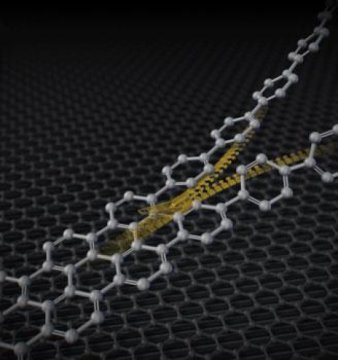‘Zipping-up’ rings to make nanographenesA fast and efficient method for graphene
‘Zipping-up’ rings to make nanographenesA fast and efficient method for graphene nanoribbon synthesisNanographenes are attracting wide interest from many researchers as a powerful candidate for the next generation of carbon materials due to their unique electric properties. Scientists at Nagoya University have now developed a fast way to form nanographenes in a controlled fashion. This simple and powerful method for nanographene synthesis could help generate a range of novel optoelectronic materials, such as organic electroluminescent displays and solar cells.Nagoya, Japan – A group of chemists of the JST-ERATO Itami Molecular Nanocarbon Project and the Institute of Transformative Bio-Molecules (ITbM) of Nagoya University, and their colleagues have developed a simple and powerful method to synthesize nanographenes. This new approach, recently described in the journal Science, is expected to lead to significant progress in organic synthesis, materials science and catalytic chemistry.Nanographenes, one-dimensional nanometer-wide strips of graphene, are molecules composed of benzene units. Nanographenes are attracting interest as a powerful candidate for next generation materials, including optoelectronic materials, due to their unique electric characteristics. These properties of nanographenes depend mainly on their width, length and edge structures. Thus, efficient methods to access structurally controlled nanographenes is highly desirable.Read more. -- source link
Tumblr Blog : materialsscienceandengineering.tumblr.com
#materials science#science#nanoribbons#graphene#nanotechnology#carbon#nagoya university#optoelectronics#benzene#catalysts#palladium
